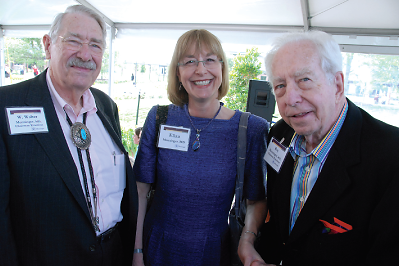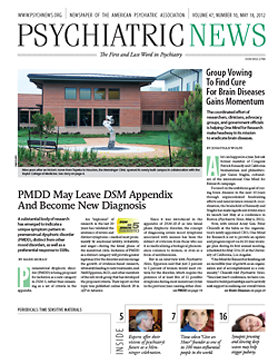The Menninger Clinic, long at the center of American psychiatry—geographically and otherwise—completed its shift from Topeka, Kan., with the opening of a new 120-bed campus in Houston.
The Menninger family opened its original psychiatric clinic in Topeka in 1925, and the facility moved to Houston in 2003, primarily to achieve the benefits of integrating its work with an academic medical center, the Baylor College of Medicine.
“Menninger was able to transfer the treatment values and strategies from Topeka to Houston,” said then-APA President John Oldham, M.D., the clinic’s senior vice president and chief of staff and a professor in the renamed Menninger Department of Psychiatry and Behavioral Sciences at Baylor. “But that move was both a transfer and a transformation that linked an 85-year-old tradition with the Baylor researchers and clinicians who now work with Menninger.”
Situated on 50 acres, the new location has space for expansion. Clinic leaders envision it as a site not just for inpatient treatment but also as the core of a mental health care community that will include outpatient care, advocacy organizations, educational programming, and increased research capacity.
“Menninger has held an almost unique place in American psychiatry,” said Thomas Insel, M.D., director of the National Institute of Mental Health, who attended the opening events. “Opening the new clinic is an opportunity for Baylor and Houston to become an epicenter for neuropsychiatric care and neuropsychiatric research.”
The clinic’s design reflects recent thinking in the architecture of psychiatric facilities.
“We’re a hospital, but we don’t want to look like a hospital,” said Larry Denoyer, vice president for facilities and property management. “Patient rooms look like your guest room at home.”
Most rooms are designed for two patients but are built to maximize privacy with a partial wall separating the two sleeping areas and a bathroom for each patient. Furnishings and wall trim are made of dark wood, reminiscent of the Arts-and-Crafts style popular a century ago.
Collaboration between Menninger officials and the architects and builders eliminated as many ligature points as possible. For instance, there are rounded handles but not knobs to open doors, and towel hooks snap down like light switches when pressure is applied.
The double rooms also serve a therapeutic purpose, said Elizabeth Newlin, M.D., program director of the Adolescent Treatment Program.
“Some adolescents struggle with feelings of isolation,” Newlin told Psychiatric News. “We want to discourage behavior that reinforces that fear. The program is designed to promote strengthening of their capacity to rely on relationships again. So having a roommate can be one way to enter a trusting relationship with another person.”
Lead architect David McLemore, A.I.A., of Kirksey Architecture in Houston, spent time with patients at Menninger’s temporary quarters in Houston during the design phase to better understand their needs.
“The patient is a visitor,” said McLemore in an interview with Psychiatric News. “There is a certain amount of anxiety in arriving for treatment because the patient has never been there before, so we strive to use architecture to relieve stress and anxiety.”
Overall, the architecture of the five patient units takes its primary cue from Frank Lloyd Wright. “We used historical design elements with a modernist twist,” McLemore noted.
Buildings are one story with strong horizontal lines and are thus less imposing than traditional, vertically designed hospitals. Keeping everything on just one level, which uses more land to house the same number of patients, was a “gutsy call” by Menninger, said McLemore.
“We worked on breaking down the scale of the buildings to a human scale,” he said.
Common areas are bathed in natural light from large windows, by now a standard feature in psychiatric architecture. Patients can look out to see some of the 650 trees planted on the grounds.
Outside, grassy earthen berms built onto the once-flat landscape break up the open space between buildings, create gathering spaces, and add a sense of privacy. A 10-foot-high wooden fence around the entire property provides both security and privacy.
Architectural considerations went beyond style and patient care, said McLemore. The two-story main building has laminated, hurricane-resistant windows, an important consideration in Houston. The gym and dining room can be converted into shelters in times of emergency, and there’s a massive water-storage tank and auxiliary generators for the next time a major hurricane hits.




